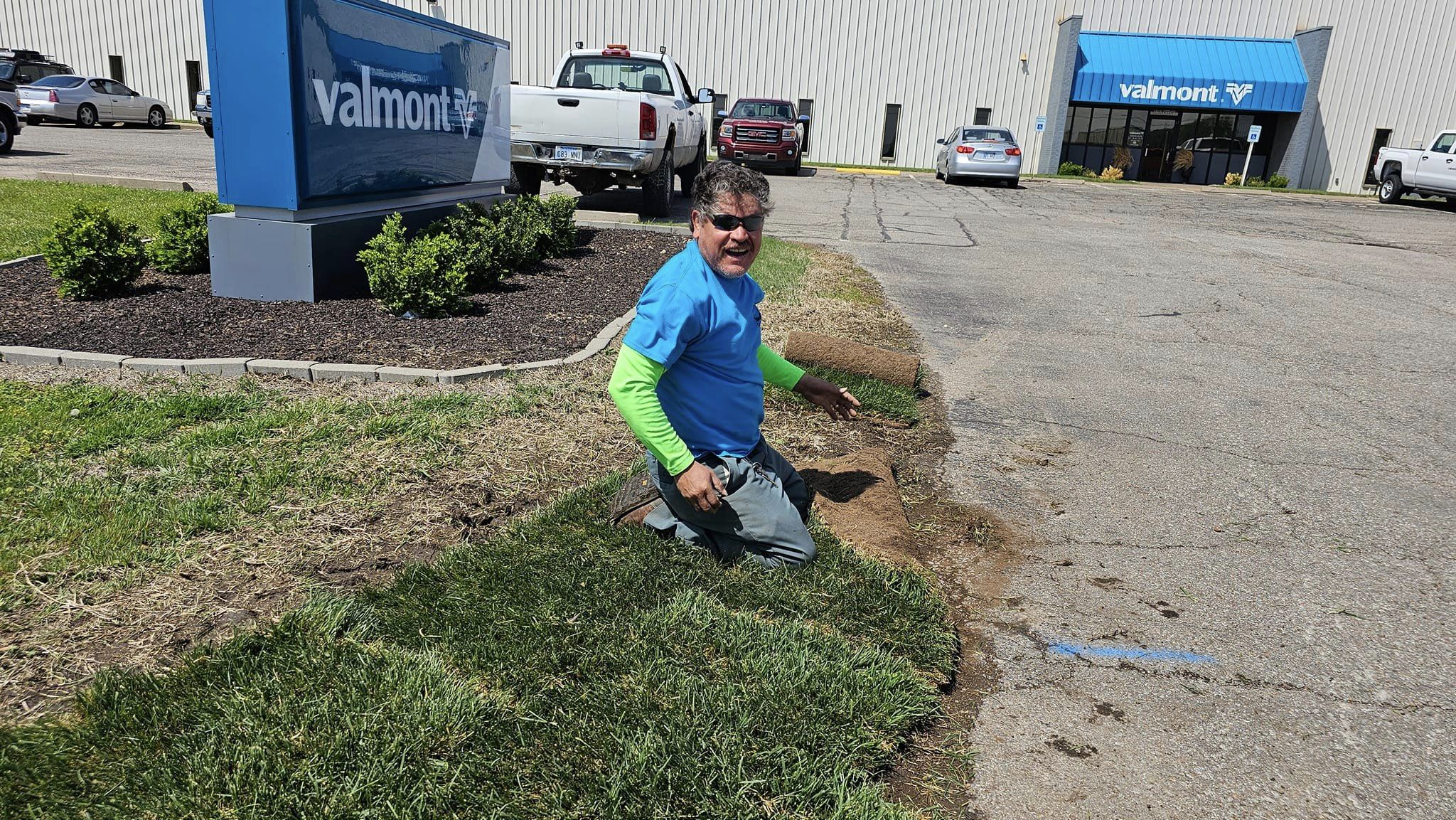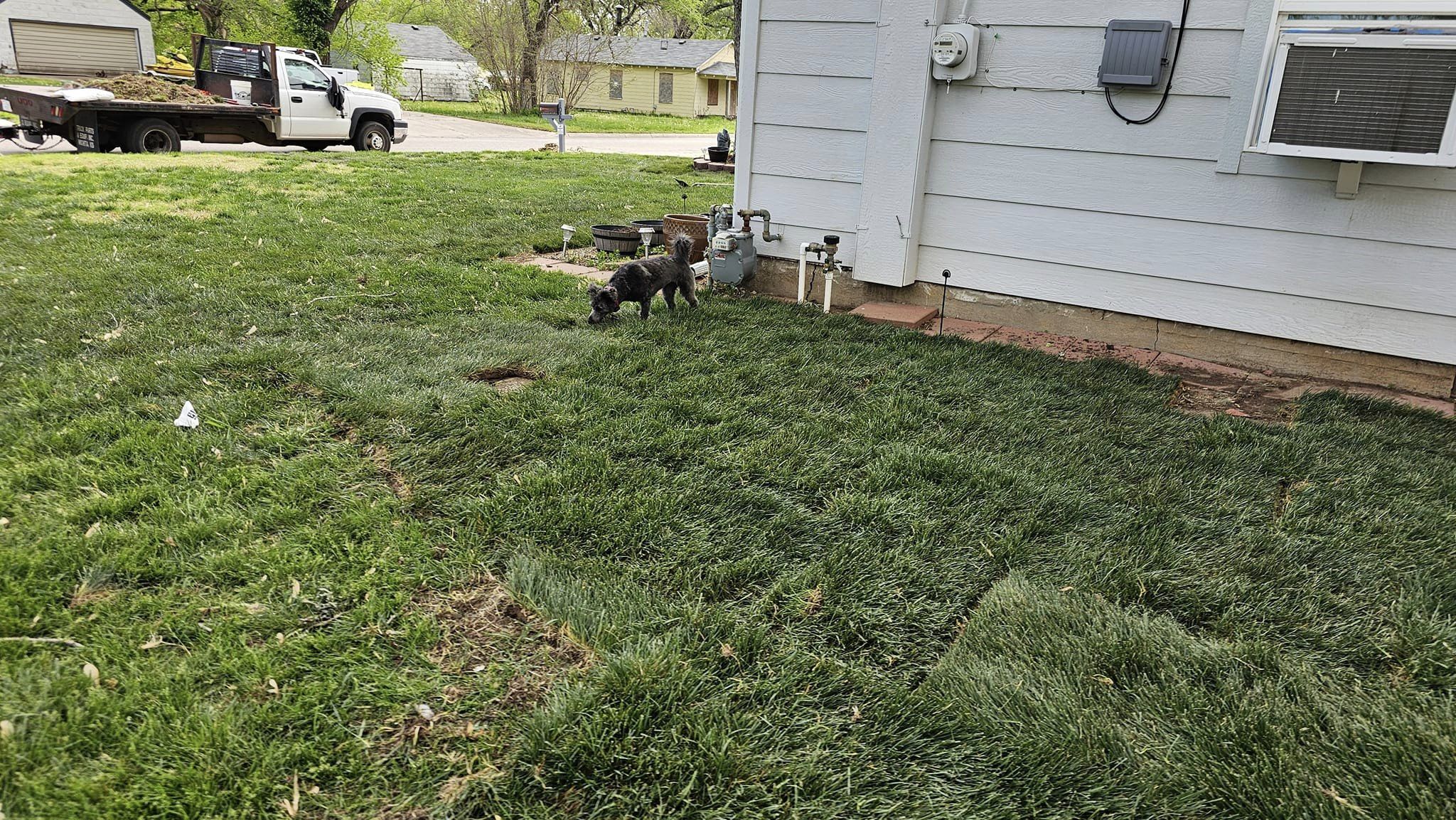Sod Installation: 3 Common Aftercare Challenges & How to Overcome Them
Sod installation can transform a barren yard into a vibrant oasis, but the journey doesn’t end when the last piece is laid. Many homeowners have a difficult time caring for sod post-installation because new grass requires significant attention in the first few weeks.
In this blog post, we’ll help you overcome patchy areas, deter pests, and rejuvenate tired sod post-installation.

Patchy Areas After Sod Installation
There are several reasons why you may be seeing patchy grass after installing sod, including air pockets, underwatering, overwatering, poor soil preparation, installing the wrong type of grass, or fertilizing too soon. If air pockets are trapped between the sod and the dirt, the roots can’t grow properly or get enough moisture. This causes yellow patches that eventually die. The best way to avoid this is by preparing your soil correctly before installation. One thing to note about sod is that it requires a specific watering schedule to grow optimally. Your lawn should be fully saturated for 4-6 hours after installation because roots dry out quickly, and if the sod loses moisture, gaps will appear and pieces will shrink. That said, overwatering also causes problems by drowning the grass. Poor soil prep and planting the wrong type of sod can result in it not taking root properly. Ensure you’re clearing your yard of all old grass, debris, and weeds before laying sod, and ensure it’s not too compacted. Also, ensure you choose a grass type that’s right for your climate. It’s also important not to fertilize too soon, as that can burn your roots and kill them off. Wait at least six weeks before fertilizing.Deterring Pests After Sod Installation
The difficult thing about new sod installation is that it’s just like regular grass but much more vulnerable to stressors because it’s not established yet. That said, applying insecticide will not stress it. You should apply insecticide because it’s not uncommon for sod to come infested with sod webworm eggs from the sod farm. It’s important to monitor your new sod closely and treat any sign of sod webworms with insecticide immediately. Chinch bugs are another common pest that infests sod, but the only reason they would show up is because your sod is not getting enough water. Additionally, if you see wilted grass blades, brown turf patches, and spongy turf that lifts easily from the soil, that could be a sign of grubs. It’s important to apply a preventative grub control product before midsummer when grubs hatch. Ultimately, the best pest deterrents are proper watering and care, insecticides, and soil preparation. If sod is subjected to other stressors, it is likely to become overrun with pests because of its vulnerable state, so it’s crucial to ensure that you have the time for a proper care schedule for the three weeks following installation before you decide to install.
 (316) 435-3509
(316) 435-3509 office@divine-lawns.com
office@divine-lawns.com